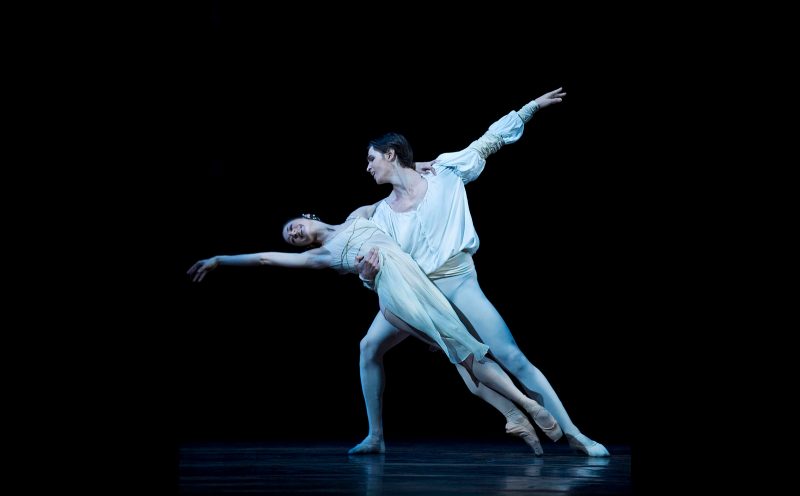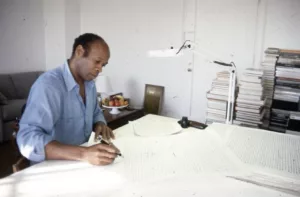
Romeo & Juliet & Tristan & Isolde
by Linda Holt
I had the great pleasure (April 5, 2019) of hearing the entire Romeo and Juliet ballet of Sergei Prokofiev, in a revelatory performance by the Philadelphia Orchestra under Yannick Nézet- Séguin. The sold-out concert took place in Verizon Hall, Kimmel Center, Philadelphia, Pa. This is a rare treat, and I say this as someone who has never cared for the suite distilled from the lengthy ballet score. The suite is a lop-sided synopsis, the complete ballet a universe rich in feeling, a treat for the brain, and dynamically adventurous.
While normally complete ballets work best supporting a dance production, this is not necessarily the case with Romeo and Juliet. The score was bounced around among Soviet dance companies in the 1930s before finding a site for its premier in what was then Czechoslovakia. Prokofiev is an elusive creator, his compositional identity morphing from hard-edged modern to dewy-eyed traditionalist. It’s all tangled in the sounds that Romeo and Juliet make. And yet we hanker for a visual element, some physicality of expression.
To provide this without becoming a ballet where we would do more watching and less listening, the Orchestra turned to another Philadelphia company, JUNK, an edgy dance troupe founded by Brian Sanders that defies easy categorization. Think of it as a marriage of Pilobolus-style dance, Cirque-du-Soleil aerial gymnastics, with shades of performance art.
JUNK performers–the men frequently bare-chested in jeans, the women in fluttering chemises– appear in scarcely a third of the more than 30 thematic sections of this four-act production. This allows the Orchestra to claim center stage, and that it does very well. Nézet-Séguin and the musicians have become comfortable with each other during the seven years of their partnership. There is a depth and maturity to this performance, leaving no doubt that the music itself is center stage no matter how heart-stopping the acrobatics on a small platform behind and above the Orchestra.
Yet it was impossible to look anywhere else whenever the athletic performers, more muscular than many winners of Olympic gold, whirled around poles suspended like trapezes, or, in the case of Julia Higdon as Juliet, climbed a rope suspended from the ceiling with the agility of a South Sea islander. Each set piece was more impressive than the previous. Higdon and her partner, Teddy Fatscher as Romeo, expressed the yearning but also the fulfillment of desire, becoming one body, one spirit, one artistic entity, whether dancing, kneeling in prayer, or awakening after a night of love.
As I inhaled the music and felt my heart lifted by these gifted performing artists, I recalled a performance of Richard Wagner’s Tristan und Isolde, that I attended last September at the Opéra Bastille in Paris. Philippe Jordan, who is conducting the Ring cycle at the Metropolitan this spring, including last week’s simulcast of Die Walküre, elicited a large, commanding sound, redolent of brine and the sea, from the Orchestre de l’Opéra national de Paris. This is the celebrated Peter Sellars production fusing live opera with cinema, but there is so much more.
In Tristan, the story unfolds as a symbolist, black-and-white film on a large screen behind the singers, Martina Serafin as Isolde and Andreas Schager as Tristan. In the film, two unidentified actors portray the doomed couple. The use of film allowed the singers to focus entirely on music, and also permitted the presentation of something few opera singers would care to incorporate in their performances: full frontal nudity.
Unlike the JUNK production, the lead film performers were not superhuman physical specimens. In fact, their undeveloped bodies and plain features underscored the vulnerability of ordinary people caught in an extraordinary web of desire.
The film began with two figures walking toward us from afar, slowly disrobing, and interacting with various symbolic depictions of water, later candles and fire. Yet the relationship between the two protagonists, whether in film or through some of the most heavenly music ever composed, remains one of tenderness rather than explosive passion, of mature affection, not adolescent intensity. Poison may destroy the body in all its frailty, but love remains eternal, like the rolling sea so eerily omnipresent in Bill Viola’s video artistry.
With both productions, it was clear that the music directors honored and respected the composers’ original intentions even as new visual material was incorporated. This will be key to the success of similar innovations to come.
Bio
A lifelong resident of the Delaware Valley, Linda Holt writes music reviews for a number of online journals and, as L.L. Holt, has published two novels about Beethoven’s childhood (Invictus) and early years in Vienna (The Black Spaniard). When she was a child, her attraction to “classical” music and desire to go to college were strongly discouraged, and she learned to read music by studying library books. Her first formal music lessons took place in high school on borrowed instruments, and with her music class, she attended the Philadelphia Orchestra’s concerts for young people. Eventually, she was able to complete courses in music and criticism and earn several university degrees. Today, she recalls with gratitude her teacher’s inspiring words: “Anyone who truly wants to, can and will go to college and achieve their heart’s desire.”
LLHolt.com
Twitter: @ClassicalRaver
Instagram: holtlinda








